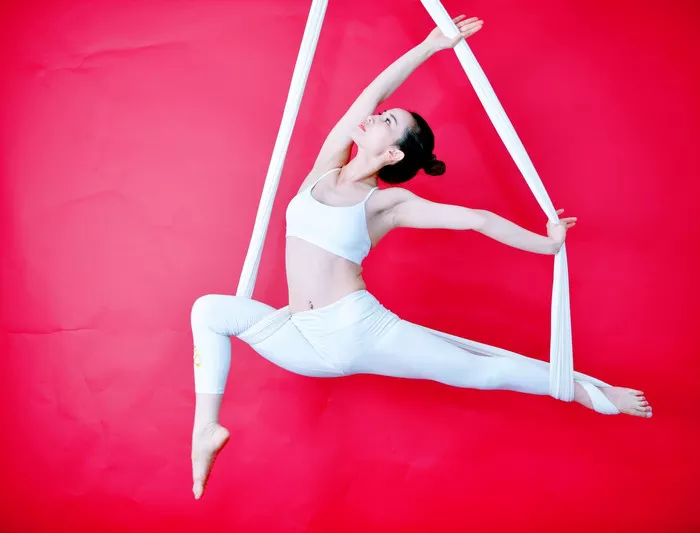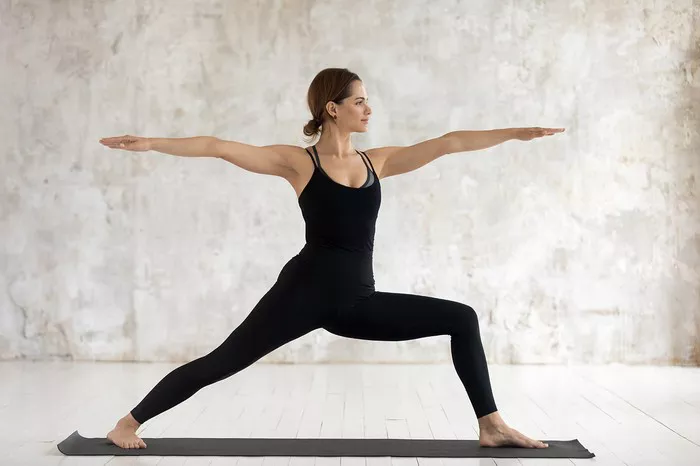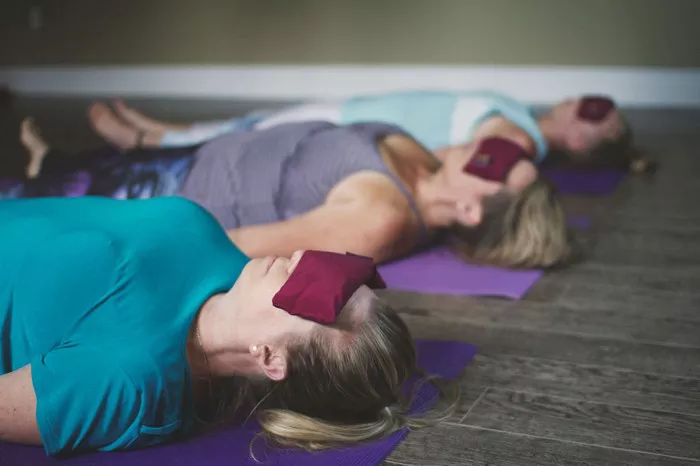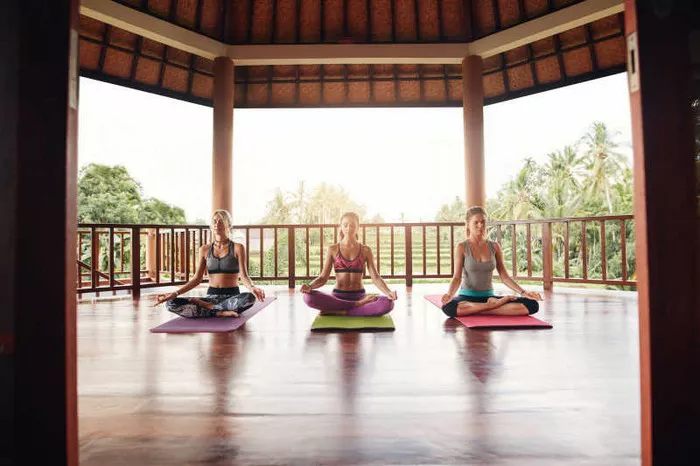The yoga swing, also known as a yoga hammock or aerial yoga swing, is a versatile piece of equipment that offers a unique approach to practicing yoga. It combines traditional yoga poses with the support and resistance of a swing, enabling practitioners to deepen stretches, improve flexibility, and enhance overall body strength. This guide will provide you with an in-depth understanding of how to use a yoga swing, the benefits it offers, and tips for a safe and effective practice.
What is a Yoga Swing?
A yoga swing is a fabric sling with handles that can be suspended from the ceiling or a sturdy overhead structure. Made from high-density nylon or silk, the swing is designed to support the weight of the user, allowing for a wide range of movements and poses. The swing typically includes three sets of handles at different heights, which can be used for various exercises and positions.
Benefits of Using a Yoga Swing
Enhanced Flexibility
Using a yoga swing helps increase flexibility by allowing deeper stretches and improved range of motion. The support provided by the swing enables practitioners to maintain and hold poses longer, thereby stretching muscles and ligaments more effectively.
Improved Strength
The resistance offered by the swing helps build strength in the core, arms, legs, and back. By engaging muscles to stabilize and balance in different positions, users can develop greater muscle tone and endurance.
Better Alignment
The yoga swing promotes proper alignment by supporting the body in various poses. This can help reduce the risk of injury and improve overall posture, as the swing assists in maintaining correct form.
Decompression of the Spine
One of the most significant benefits of using a yoga swing is spinal decompression. Hanging upside down or in inversion poses relieves pressure on the spine, which can alleviate back pain and improve spinal health.
Increased Blood Circulation
Inversion poses with the yoga swing enhance blood circulation, which can have various health benefits, including improved digestion, better skin health, and increased energy levels.
See Also: Top 10 Yoga Swing Poses to Try
Setting Up Your Yoga Swing
Choosing the Right Location
To set up a yoga swing, you need a safe and sturdy location. Ensure the ceiling or overhead structure can support your weight and the dynamic movements involved in aerial yoga. Typically, a yoga swing requires a ceiling height of at least 7 to 9 feet for ample space to move freely.
Installing Ceiling Hooks or an Overhead Bar
1. Locate a Beam or Joist: Use a stud finder to locate a beam or joist in your ceiling. This is where you will install the ceiling hooks or eye bolts.
2. Drill Pilot Holes: Once you’ve located the beam, drill pilot holes to make it easier to insert the hooks or bolts.
3. Insert Hooks or Eye Bolts: Screw in the ceiling hooks or eye bolts securely. They should be able to withstand your weight and the forces applied during your practice.
4. Attach Carabiners and Daisy Chains: Attach carabiners and daisy chains to the hooks or eye bolts. These will allow you to adjust the height of the yoga swing.
5. Hang the Swing: Finally, attach the yoga swing to the daisy chains using additional carabiners. Ensure everything is secure before use.
Safety Tips
1. Check Equipment Regularly: Before each use, inspect the yoga swing, carabiners, and hooks for any signs of wear or damage.
2. Use a Spotter: If you are new to using a yoga swing, practice with a spotter who can assist and ensure your safety.
3. Start Slowly: Begin with simple poses and gradually progress to more advanced movements as you gain confidence and experience.
Basic Yoga Swing Poses
1. Inverted Pose
Benefits: Spinal decompression, improved blood circulation, and enhanced flexibility.
How to Perform:
- Stand in front of the swing with your back to it.
- Place the fabric of the swing around your lower back and hips.
- Lean back and lift your legs, hooking them over the swing.
- Allow your body to hang upside down, with your arms extended toward the floor.
- Hold the position for 1-2 minutes, breathing deeply.
2. Supported Backbend
Benefits: Opens the chest, strengthens the back, and improves flexibility.
How to Perform:
- Sit in the swing with the fabric supporting your lower back.
- Lean back and extend your arms overhead, reaching for the floor.
- Allow the swing to support your weight as you arch your back and open your chest.
- Hold the position for 1-2 minutes, breathing deeply.
3. Forward Fold
Benefits: Stretches the hamstrings, relieves tension in the back, and improves flexibility.
How to Perform:
- Stand in front of the swing and place the fabric around your hips.
- Lean forward, allowing the swing to support your weight.
- Extend your arms toward the floor, relaxing your head and neck.
- Hold the position for 1-2 minutes, breathing deeply.
4. Plank Pose
Benefits: Strengthens the core, arms, and shoulders.
How to Perform:
- Place your feet in the swing, with the fabric supporting your ankles.
- Walk your hands forward into a plank position, keeping your body in a straight line.
- Hold the position for 30-60 seconds, engaging your core and breathing steadily.
5. Warrior Pose
Benefits: Strengthens the legs, improves balance, and opens the hips.
How to Perform:
- Stand in front of the swing and place one foot in the fabric.
- Extend your leg back, allowing the swing to support your weight.
- Bend your front knee and extend your arms overhead or to the sides.
- Hold the position for 30-60 seconds, breathing deeply.
- Repeat on the other side.
Advanced Yoga Swing Poses
1. Flying Pigeon
Benefits: Opens the hips, stretches the glutes, and improves balance.
How to Perform:
- Start in the plank position with your feet in the swing.
- Bring one knee forward, placing the ankle on the opposite thigh.
- Lean forward and extend your arms, balancing on your hands.
- Hold the position for 30-60 seconds, breathing deeply.
- Repeat on the other side.
2. Inverted Lotus
Benefits: Deep hip opener, spinal decompression, and enhanced flexibility.
How to Perform:
- Sit in the swing with your legs crossed in a lotus position.
- Lean back and lift your legs, hooking them over the swing.
- Allow your body to hang upside down, with your arms extended toward the floor.
- Hold the position for 1-2 minutes, breathing deeply.
3. Advanced Backbend
Benefits: Deep backbend, strengthens the back, and opens the chest.
How to Perform:
- Sit in the swing with the fabric supporting your lower back.
- Lean back and extend your arms overhead, reaching for the floor.
- Allow the swing to support your weight as you arch your back deeply.
- Hold the position for 1-2 minutes, breathing deeply.
4. Single-Leg Inversion
Benefits: Improves balance, strengthens the core, and enhances flexibility.
How to Perform:
- Stand in front of the swing and place one foot in the fabric.
- Lean back and lift your other leg, allowing the swing to support your weight.
- Extend your arms toward the floor, relaxing your head and neck.
- Hold the position for 1-2 minutes, breathing deeply.
- Repeat on the other side.
Incorporating Yoga Swing into Your Practice
Warm-Up Routine
Before starting your yoga swing practice, it is essential to warm up your body. This can include:
1. Gentle Stretching: Perform gentle stretches to loosen your muscles and prepare your body for the poses.
2. Breathing Exercises: Practice deep breathing exercises to calm your mind and increase oxygen flow to your muscles.
3. Light Cardio: Engage in light cardio activities, such as walking or jumping jacks, to raise your heart rate and increase blood flow.
Cool-Down Routine
After your yoga swing practice, it is equally important to cool down and relax your body. This can include:
1. Gentle Stretching: Perform gentle stretches to release any tension in your muscles and improve flexibility.
2. Relaxation Poses: Practice relaxation poses, such as Savasana (Corpse Pose), to calm your mind and body.
3. Breathing Exercises: Practice deep breathing exercises to lower your heart rate and promote relaxation.
Tips for a Successful Practice
1. Listen to Your Body: Pay attention to your body’s signals and avoid pushing yourself too hard. Practice within your limits and take breaks when needed.
2. Stay Hydrated: Drink plenty of water before, during, and after your practice to stay hydrated and support your body’s functions.
3. Wear Comfortable Clothing: Wear comfortable, form-fitting clothing that allows for a full range of motion and does not get caught in the swing.
4. Practice Regularly: Consistency is key to improving your skills and reaping the benefits of yoga swing practice. Aim to practice at least 2-3 times a week.
Common Mistakes to Avoid
Overextending
One of the most common mistakes is overextending in poses, which can lead to injury. Always practice within your limits and listen to your body.
Poor Alignment
Maintaining proper alignment is crucial to prevent injury and maximize the benefits of each pose. Use a mirror or seek guidance from a qualified instructor to ensure correct form.
Ignoring Safety Checks
Regularly check your equipment for signs of wear and tear. Ignoring safety checks can lead to accidents and injuries.
Rushing Through Poses
Take your time with each pose, focusing on proper form and breathing. Rushing through poses can lead to poor alignment and reduced benefits.
Conclusion
Using a yoga swing can enhance your yoga practice by offering unique benefits such as improved flexibility, strength, and spinal health. By following the guidelines and tips provided in this guide, you can safely and effectively incorporate the yoga swing into your routine. Remember to listen to your body, practice regularly, and prioritize safety to make the most of your yoga swing practice.
Related topics:
























